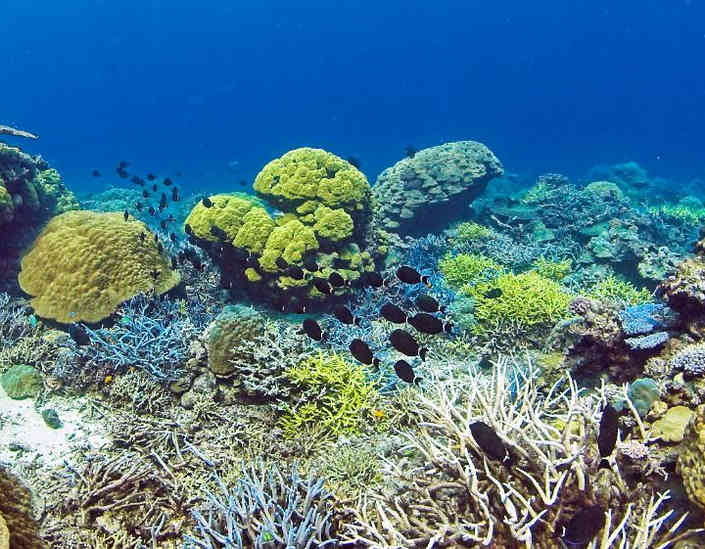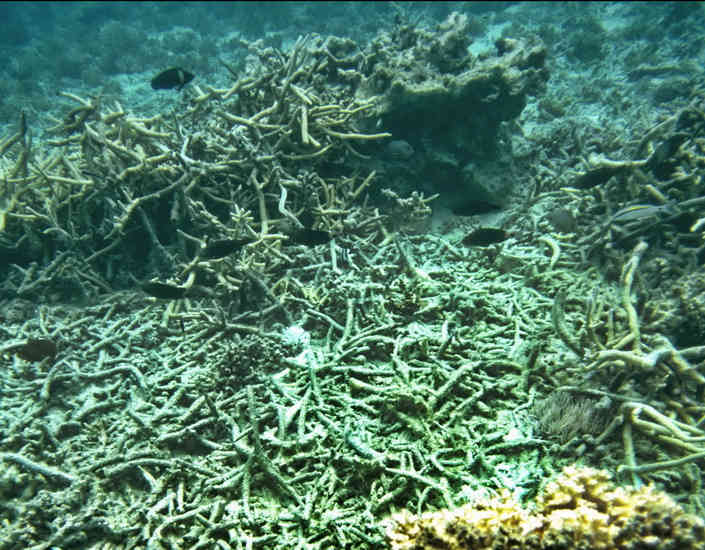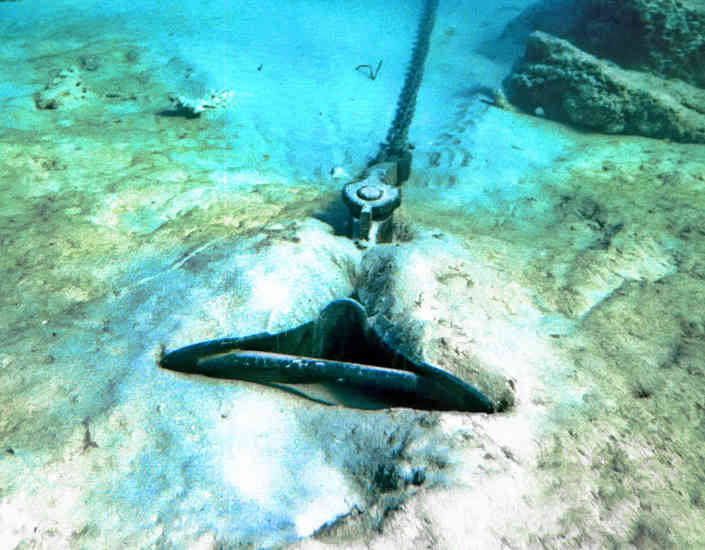Anchor in the Sand, Not in the Coral
Often, in shallow tropical water, the reefs are clearly visible as dark patches. But in deeper water or water that is not very clear, a good depth sounder is needed to locate coral-free areas. Every yacht cruising in coral waters should have a depth sounder that shows a clear image of the bottom, not just a digital display of the depth.
If you don't care about destroying the coral reef, you should at least care about not destroying your boat - anchoring in fragile coral environments will foul the anchor and your boat could drag in a strong blow.
So anchor in the sand or mud, NOT in the coral.
Forbidden Anchorages in Vanuatu
Bokissa Island - Espiritu Santo -
The entire area surrounding Bokissa Island is a marine sanctuary and yachts are forbidden to drop an anchor anywhere on the reef shelf within the 60-metre depth line. Click on the interactive sphere image above to see exactly why yachts are not allowed to drop their anchors and chains here. Try the full screen view.
Bokissa Island is a private island resort and anyone wishing to visit the island, snorkel or dive on the surrounding reefs, must have prior permission from the resort owners.
Yachts can contact the resort on VHF channel 10.
Code of Anchoring in Reef Environments (CARE)
We strongly support the Code of Anchoring in Reef Environments (CARE) ; Anchor in the Sand, Not in the Coral. We urge all yachts cruising in New Caledonia to strictly follow this code of ethics. For an explanation of the Code of Anchoring in Reef Environments see the following video:



